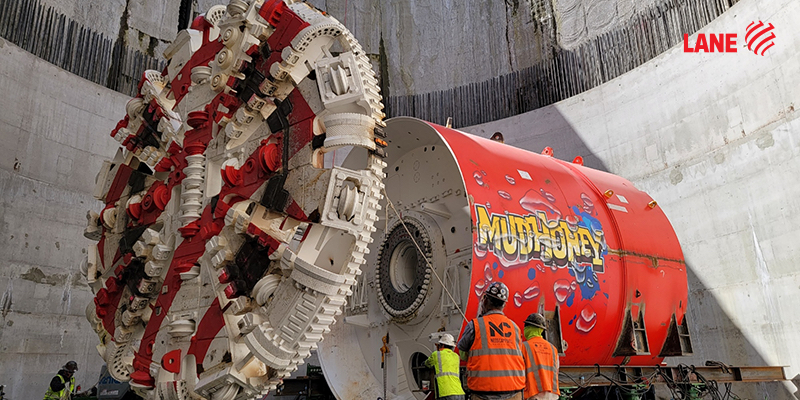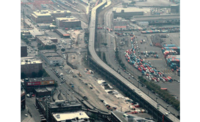A 21-ft, 8-in dia earth pressure balance tunnel boring machine has launched in Seattle to begin creation of a 2.7-mile-long tunnel that will store combined sewer overflow as part of the city's consent decree with the US Environmental Protection Agency.
A major portion of the city and King County Ship Canal Water Quality Project involves the creation of an underground storage tunnel to reduce the amount of polluted stormwater from rain and sewage flowing into the Lake Washington Ship Canal, Salmon Bay and Lake Union.
In some parts of Seattle, sewage and stormwater share a set of pipes in a combined sewer and stormwater overflow system that can send untreated co-mingled water into the environment. The region is under the federal order to prevent the sewage releases.
By creating a 2.7-mile-long, 18-ft, 10-in bored tunnel from Ballard to Wallingford in north Seattle, the county wastewater division can store overflow untreated sewage and stormwater until the system can treat the additional loads.
Lane Construction, contractor on the $225-million tunnel portion of the larger $570 million project, launched the TBM into the ground April 19 and plans to have the overflow tunnel ready by 2025. When completed, the tunnel can, on average, prevent 75 million gallons of polluted stormwater and sewage from entering the neighboring waterways, says a firm spokesperson. The tunnel will capture and temporarily hold more than 29.6 million gallons during heavy rains.
The storage tunnel is part of the lager Ship Canal project from Seattle Public Utilities and the King County wastewater treatment division. Along the tunnel path, five vertical shafts in Ballard, East Ballard, Fremont, Queen Anne and Wallingford can collect stormwater and sewage flows from each basin and send them 40 to 80 ft below ground to the tunnel. To bring flows from Queen Anne into the storage tunnel, an additional 8-ft-dia conveyance tunnel underneath the Ship Canal connects the vertical shafts in Queen Anne and Fremont. New pipes will connect the existing sewer system to the shafts.
Parts for the TBM were shipped to Seattle from Germany and assembled in Ballard. Muralist Devin Finely spruced up its paint job on the TBM, dubbed MudHoney for a popular rock band.
The machine, which requires 10 to 15 operators, was built new in 2020 and is more than 14,200-ft long. The machine includes 18 double-disc cutters, 48 scrapers and 16 bucket cutters, with the ability to remove about 400,000 tons of dirt during the dig, including 105 ft under the Aurora Bridge.
Smaller tunneling machines will create conveyance tunnels under the Ship Canal between Fremont and Queen Anne and in Ballard.




Post a comment to this article
Report Abusive Comment